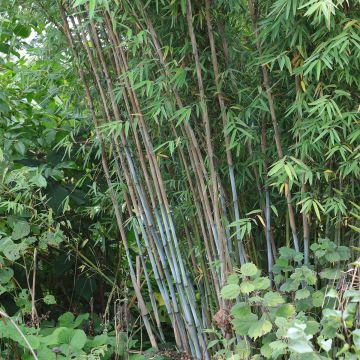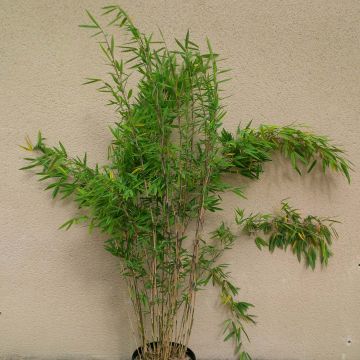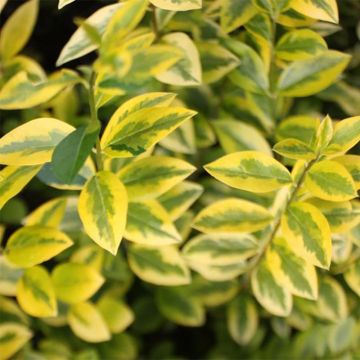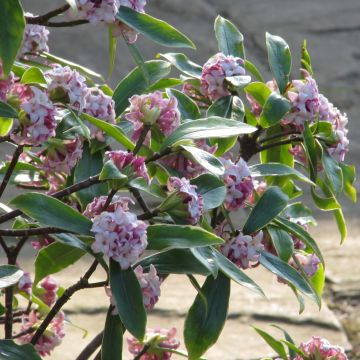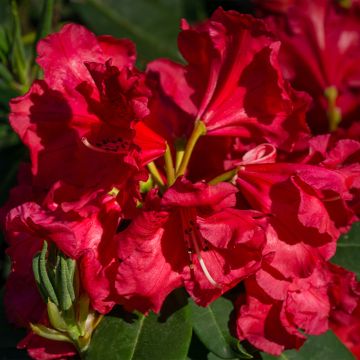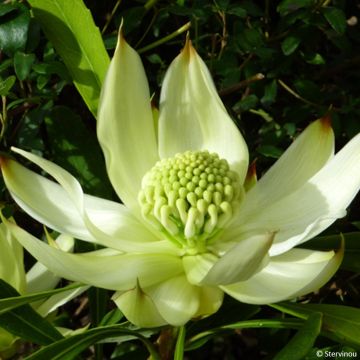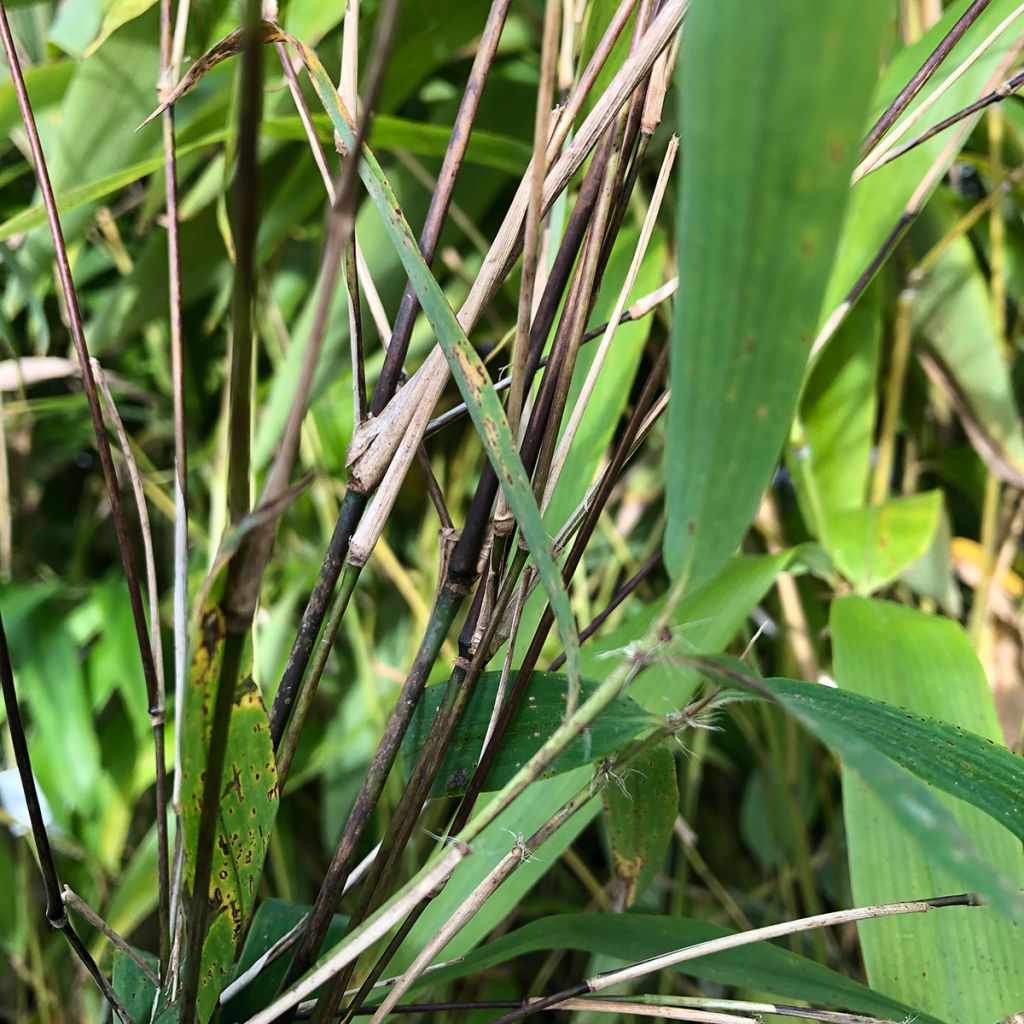

Bambou non traçant - Fargesia yunnanensis
Fargesia yunnanensis
Fargesia yunnanensis
Chinese fountain Bamboo
One of the most vigorous bamboos I have ever seen. The new culms appear to be concentrated near the old ones in the center. To be planted in partial shade/shade in the south of France, this young plant dreads direct sunlight.
Thomas, 15/09/2024
This item cannot be shipped to the selected country
Delivery charge from €5.90
More information
Schedule delivery date,
and select date in basket
This plant carries a 24 months recovery warranty
More information
We guarantee the quality of our plants for a full growing cycle, and will replace at our expense any plant that fails to recover under normal climatic and planting conditions.
From €5.90 for pickup delivery and €6.90 for home delivery
Express home delivery from €8.90.
Does this plant fit my garden?
Set up your Plantfit profile →
Description
Fargesia yunnanensis is an attractive and vigorous, large, non-spreading bamboo, native to Yunnan. It is highly ornamental, rather delicate and of a bright green colour. This species forms a dense clump, composed of tall and sturdy green canes. The straw-coloured sheaths remain on the nodes for a long time and are often striped with beautiful vertical pink-purple lines. Plant it in a sheltered location, with thick mulch, as its hardiness is estimated to be around -10°C (14°F), possibly more. The leaves of this bamboo are part of the diet of the giant panda, and it is renowned for the taste quality of its young shoots. It can reach a height of 4 to 7m, or even more under favourable conditions.
Fargesia yunnanensis is alternatively classified in the genus Fargesia, Yushania, Borinda, and Sinarundinaria. It belongs to the family Poaceae. It is native to mountain forests in Yunnan and southwestern Sichuan in China, where the climate is cool and humid. Its sturdy and clustered canes are apparently able to reach up to 10m (32ft 10in) in height with a diameter of 6cm (2.4in), under optimal conditions. They have persistent and tough sheaths with beautiful purple stripes. The leaves are long and narrow. An easy-to-grow ornamental plant, it may be wise to protect it in winter, as its hardiness has not been tested in Europe beyond -10°C (14°F). Its young shoots are edible and of excellent taste quality.
Fargesia is most often used as a windbreak or noise screen, or as an informal hedge, grown in isolated clumps or in beds. It deserves a special place. The star of Asian-inspired gardens, it suits many styles, from the most contemporary to the most exotic, including natural gardens or water gardens. When planted en masse, it quickly creates very exotic small forests, its graphic design bringing height and lushness to the decor. Its density and rapid growth make it an excellent candidate to conceal an unwanted view or create an effective windbreak, with multiple specimens. Its presence is such that you can plant it as a standalone, leaving enough space for it to express its full beauty. Moreover, it is quite easy to combine with other evergreen shrubs such as Nandina domestica, hollies, Mahonia, or Sarcococca. In a tropical-style bed, it blends well with many plants such as Cannas and Fatsia japonica.
Report an error about the product description
Fargesia yunnanensis in pictures


Plant habit
Foliage
Botanical data
Fargesia
yunnanensis
Poaceae
Chinese fountain Bamboo
China
Other Bamboos
Planting and care
Fargesia appreciates partial shade even though it tolerates the sun. However, avoid excessively drying exposures, as it dislikes intense sun and drought. Reserve a shady spot for it in southern regions. Plant this bamboo in rich, moist, rather heavy soil that retains water well. Plant it in spring or autumn. In a pot, monitor watering, especially when the foliage is very abundant. This bamboo tolerates pruning well. Slugs can devour young shoots. Its cold resistance is currently evaluated at -10°C (14°F) but it could be higher.
Planting period
Intended location
Care
-
, onOrder confirmed
Reply from on Promesse de fleurs
Evergreen shrubs
Haven't found what you were looking for?
Hardiness is the lowest winter temperature a plant can endure without suffering serious damage or even dying. However, hardiness is affected by location (a sheltered area, such as a patio), protection (winter cover) and soil type (hardiness is improved by well-drained soil).

Photo Sharing Terms & Conditions
In order to encourage gardeners to interact and share their experiences, Promesse de fleurs offers various media enabling content to be uploaded onto its Site - in particular via the ‘Photo sharing’ module.
The User agrees to refrain from:
- Posting any content that is illegal, prejudicial, insulting, racist, inciteful to hatred, revisionist, contrary to public decency, that infringes on privacy or on the privacy rights of third parties, in particular the publicity rights of persons and goods, intellectual property rights, or the right to privacy.
- Submitting content on behalf of a third party;
- Impersonate the identity of a third party and/or publish any personal information about a third party;
In general, the User undertakes to refrain from any unethical behaviour.
All Content (in particular text, comments, files, images, photos, videos, creative works, etc.), which may be subject to property or intellectual property rights, image or other private rights, shall remain the property of the User, subject to the limited rights granted by the terms of the licence granted by Promesse de fleurs as stated below. Users are at liberty to publish or not to publish such Content on the Site, notably via the ‘Photo Sharing’ facility, and accept that this Content shall be made public and freely accessible, notably on the Internet.
Users further acknowledge, undertake to have ,and guarantee that they hold all necessary rights and permissions to publish such material on the Site, in particular with regard to the legislation in force pertaining to any privacy, property, intellectual property, image, or contractual rights, or rights of any other nature. By publishing such Content on the Site, Users acknowledge accepting full liability as publishers of the Content within the meaning of the law, and grant Promesse de fleurs, free of charge, an inclusive, worldwide licence for the said Content for the entire duration of its publication, including all reproduction, representation, up/downloading, displaying, performing, transmission, and storage rights.
Users also grant permission for their name to be linked to the Content and accept that this link may not always be made available.
By engaging in posting material, Users consent to their Content becoming automatically accessible on the Internet, in particular on other sites and/or blogs and/or web pages of the Promesse de fleurs site, including in particular social pages and the Promesse de fleurs catalogue.
Users may secure the removal of entrusted content free of charge by issuing a simple request via our contact form.
The flowering period indicated on our website applies to countries and regions located in USDA zone 8 (France, the United Kingdom, Ireland, the Netherlands, etc.)
It will vary according to where you live:
- In zones 9 to 10 (Italy, Spain, Greece, etc.), flowering will occur about 2 to 4 weeks earlier.
- In zones 6 to 7 (Germany, Poland, Slovenia, and lower mountainous regions), flowering will be delayed by 2 to 3 weeks.
- In zone 5 (Central Europe, Scandinavia), blooming will be delayed by 3 to 5 weeks.
In temperate climates, pruning of spring-flowering shrubs (forsythia, spireas, etc.) should be done just after flowering.
Pruning of summer-flowering shrubs (Indian Lilac, Perovskia, etc.) can be done in winter or spring.
In cold regions as well as with frost-sensitive plants, avoid pruning too early when severe frosts may still occur.
The planting period indicated on our website applies to countries and regions located in USDA zone 8 (France, United Kingdom, Ireland, Netherlands).
It will vary according to where you live:
- In Mediterranean zones (Marseille, Madrid, Milan, etc.), autumn and winter are the best planting periods.
- In continental zones (Strasbourg, Munich, Vienna, etc.), delay planting by 2 to 3 weeks in spring and bring it forward by 2 to 4 weeks in autumn.
- In mountainous regions (the Alps, Pyrenees, Carpathians, etc.), it is best to plant in late spring (May-June) or late summer (August-September).
The harvesting period indicated on our website applies to countries and regions in USDA zone 8 (France, England, Ireland, the Netherlands).
In colder areas (Scandinavia, Poland, Austria...) fruit and vegetable harvests are likely to be delayed by 3-4 weeks.
In warmer areas (Italy, Spain, Greece, etc.), harvesting will probably take place earlier, depending on weather conditions.
The sowing periods indicated on our website apply to countries and regions within USDA Zone 8 (France, UK, Ireland, Netherlands).
In colder areas (Scandinavia, Poland, Austria...), delay any outdoor sowing by 3-4 weeks, or sow under glass.
In warmer climes (Italy, Spain, Greece, etc.), bring outdoor sowing forward by a few weeks.



































